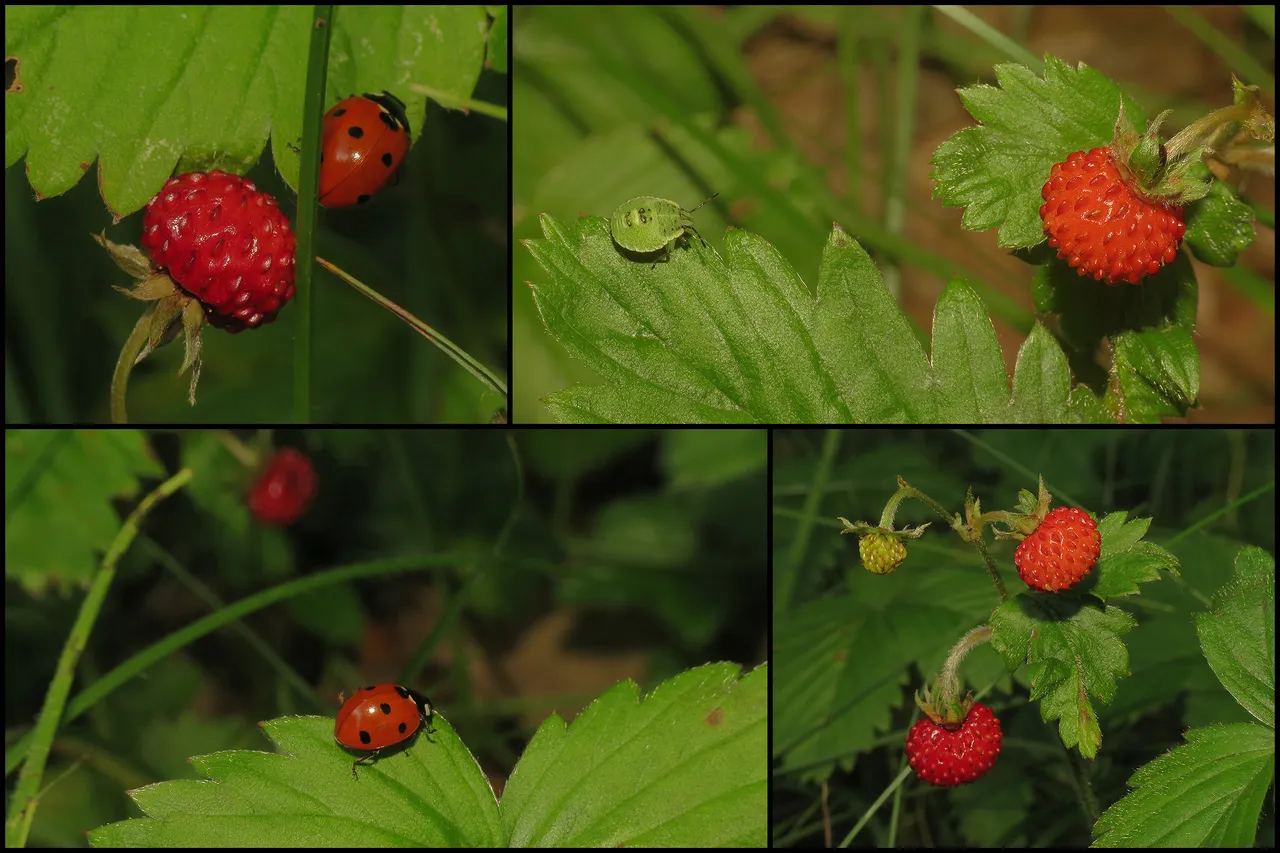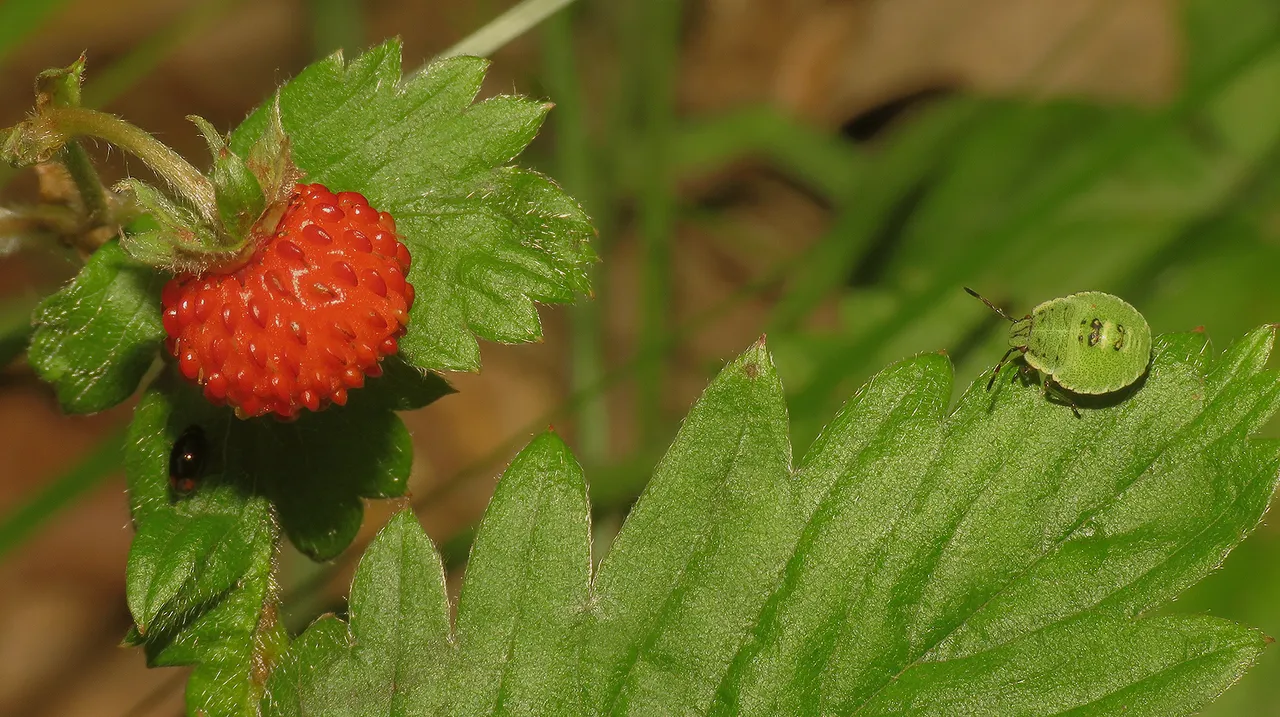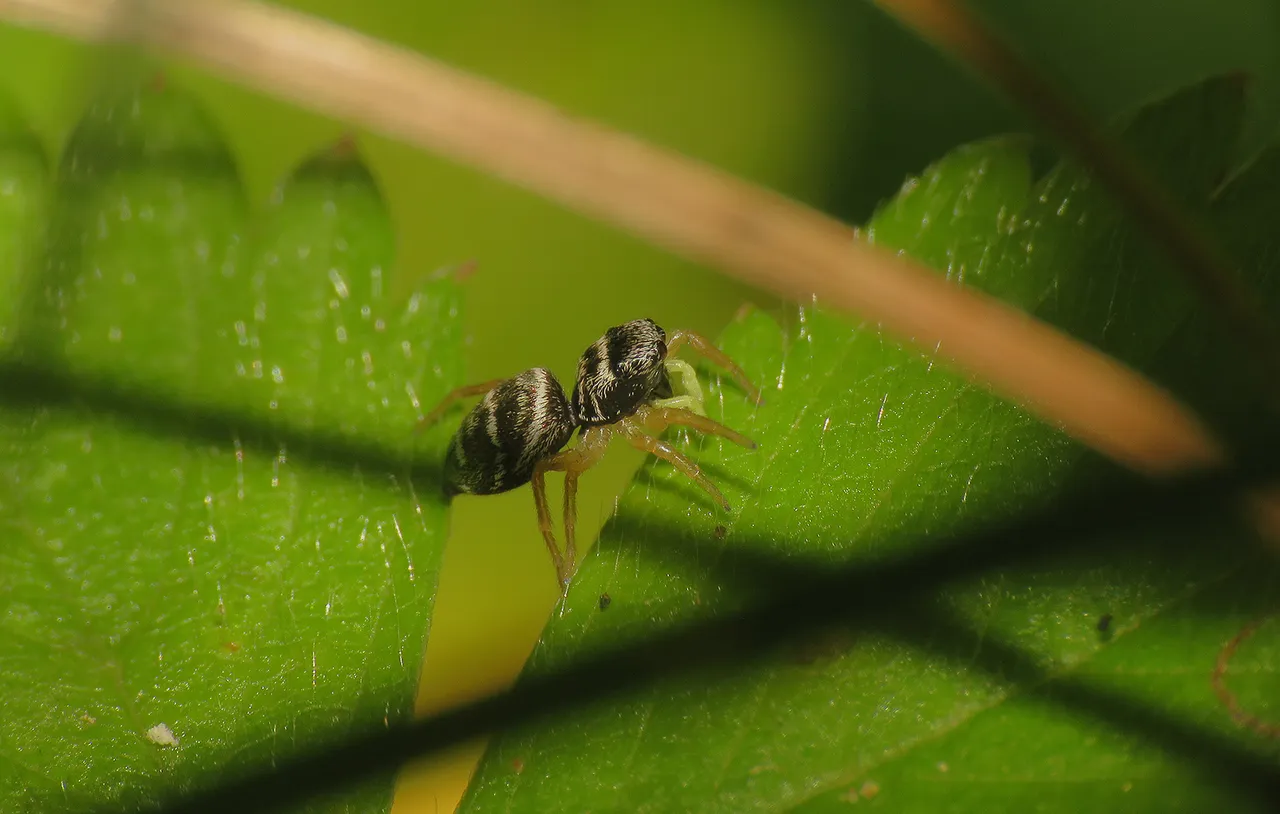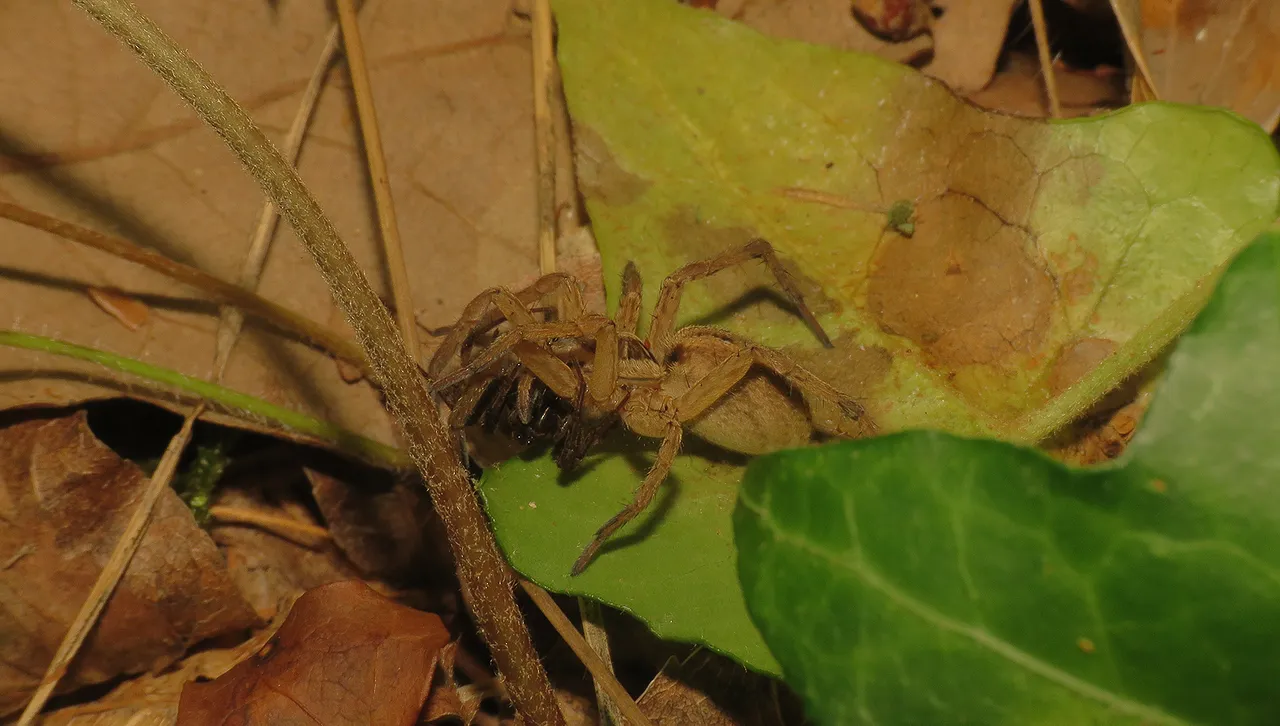Today, under the oak and elm trees, I came across a parchment of ground covered with wild strawberries.
I ate. I photographed. I had a really good time there ...

... in the rural area a couple of kilometers from the small town called Zminj.

Here you can see a nymph ...
... the young, wingless version ...

... of the Palomena prasina shield bug. As it grows, the nymph changes its appearance each time that the old exoskeleton is left behind. This 4th instar nymph has already undergone four changes and will look considerably different as an adult.

On the leaf of grass, not far from the previous scene, I photographed this minuscule rove beetle. Tachyporus hypnorum is the name of the species.
The strawberries in this post ...
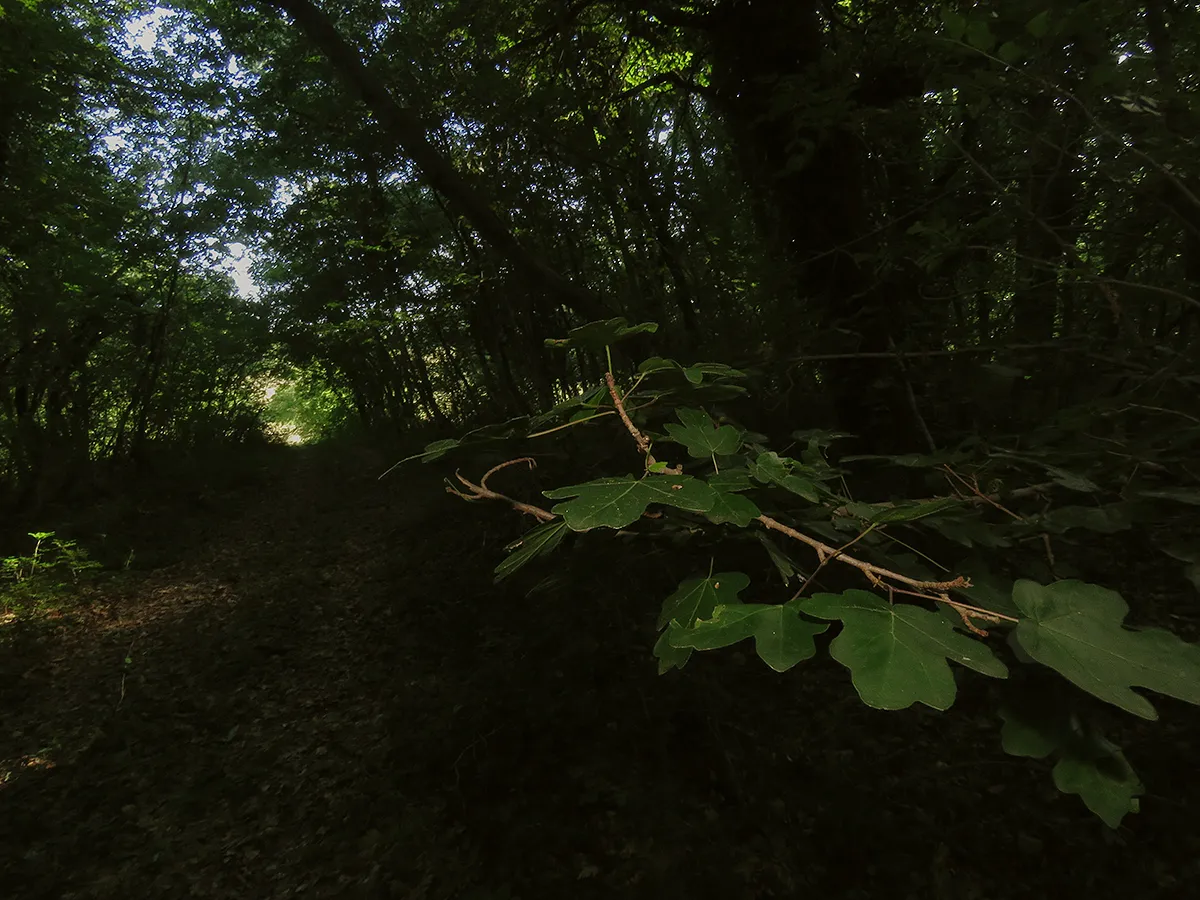
... have grown along the shady path that leads through the forest ...

... and ends in the relatively large, rounded meadow with a bunch of small trees scattered across that open, sunny place.

This tiny fly, the Geomyza combinata from the Opomyzidae family was photographed on the leaf of the wild strawberry plant.

Here you can see a portrait of the juicy little fruit.

The Coccinella septempunctata ladybird looked like a strawberry from a distance.

On another leaf, I found a minuscule spider. The juvenile Philodromus rufus. From the Philodromidae family. Spiders from that family are commonly known as Running crab spiders.
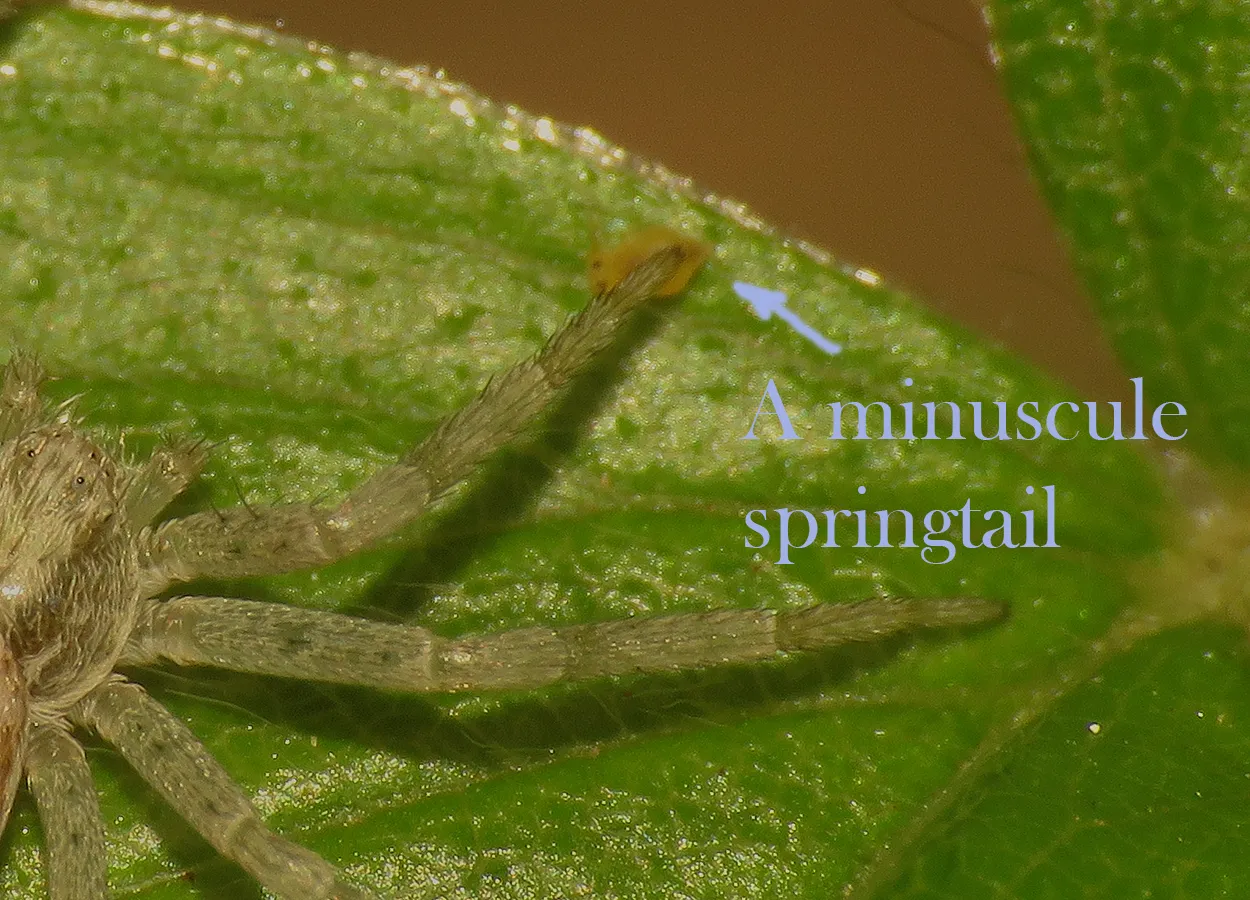
In this crop of the previous image, you can see a minuscule detail that I noticed only later, at home, when I enlarged the photograph on the PC screen. A minuscule Springtail from the Sminthuridae family ended up under one of the spider's legs. Springtails aren't insects. Nor are the spiders. But since I encountered the today among the strawberries, they ended up in this insect-themed post.

Wild strawberries are present with a couple of species in this area. In this post, you can see only the Fragaria vesca strawberries.

The young Palomena prasina shield bugs were the most numerous insects in that little strawberry field.
The red fruits surrounded by plenty of green stuff looked great in photographs. In this enlargeable photograph, the green bug and the red strawberry are part of the same scene. If you enlarge the picture by clicking on it, you may notice a minuscule black insect under the fruit. In the following enlargeable photograph ...
... you can take a better, more up-close look at the insect mentioned in the previous sentence. It's a small beetle, and in this shot, the insect has claimed on the giant strawberry. I mean, the small fruit surely looks like something pretty big from a beetle's perspective.
The flash of my camera helped me a lot in the low light conditions in the shade of the trees ...

... but the shiny surfaces of this particular insect looked much better in natural light ...

... so I made a little pedestal using the twigs on the ground, mounted the camera on that improvised thing, and took a dozen of long-exposure photographs. Only two of them ended up looking good enough to deserve a place in today's post. The minuscule beetle in these shots is the Olibrus bicolor. A species from the Phalacridae family. Beetles from that family are commonly known as Shining flower beetles.

Here you can see a spider that was hanging upside down from a leaf of grass. Can't tell you the name of the species because wasn't able to see the other side of the spider's body.

Here you can see yet another Palomena prasina nymph, well-camouflaged on the leaf of the Fragaria vesca plant. A bit further ...
... another insect was hidden in plain sight. This is the larva of some leafhopper from the Cicadellidae family.

Not far from there, on another leaf of grass, I found this moth. The Platytes cerussella from the Crambidae family.

This beautiful moth that I wasn't able to identify ...
... was resting on the leaf of the wild strawberry.
On one of the neighboring leaves, a small jumping spider suddenly appeared from somewhere.
This is the Heliophanus tribulosus.

The family is Salticidae, of course.

This moth from the Geometridae family was resting on the ivy that was spread on the ground, around the trunk of an oak tree.
Not far from the quiet moth, the Hogna radiate wolf spider has caught some much smaller spider.

This lacehopper (Cixiidae family) was quiet on a nearby leaf of ivy.
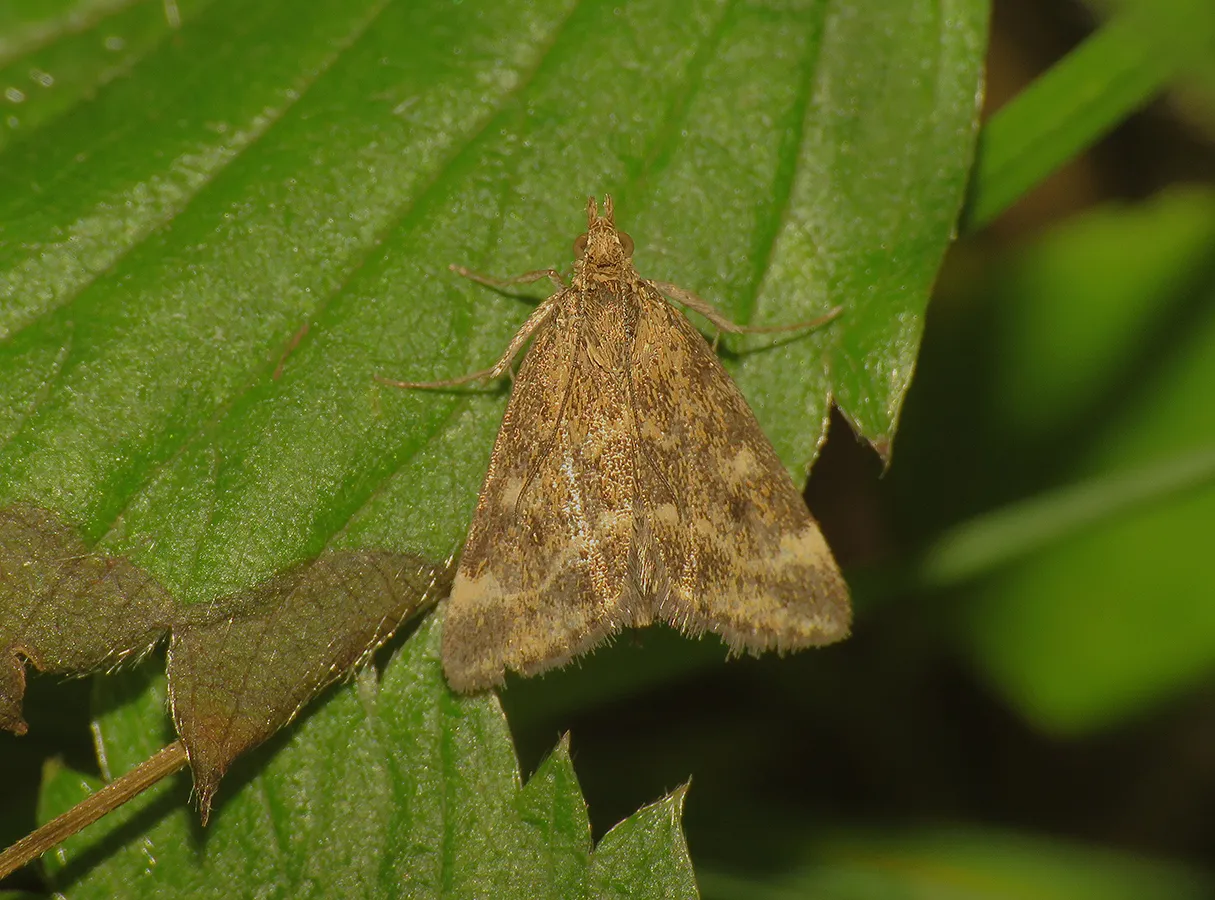
Here you can see another Crambidae moth. Can't tell you the exact species.

AND THAT'S IT. THE STRAWBERRY SUNDAY ENDS HERE. WITH ONE LAST LOOK AT THE PALOMENA PRASINA, THE HEMIPTERAN SPECIES THAT STARTED THIS POST. HOPE YOU ENJOYED THE COMBINATION OF FRUITS AND ARTHROPODS. AS ALWAYS IN THESE POSTS ON HIVE, THE PHOTOGRAPHS ARE MY WORK.

